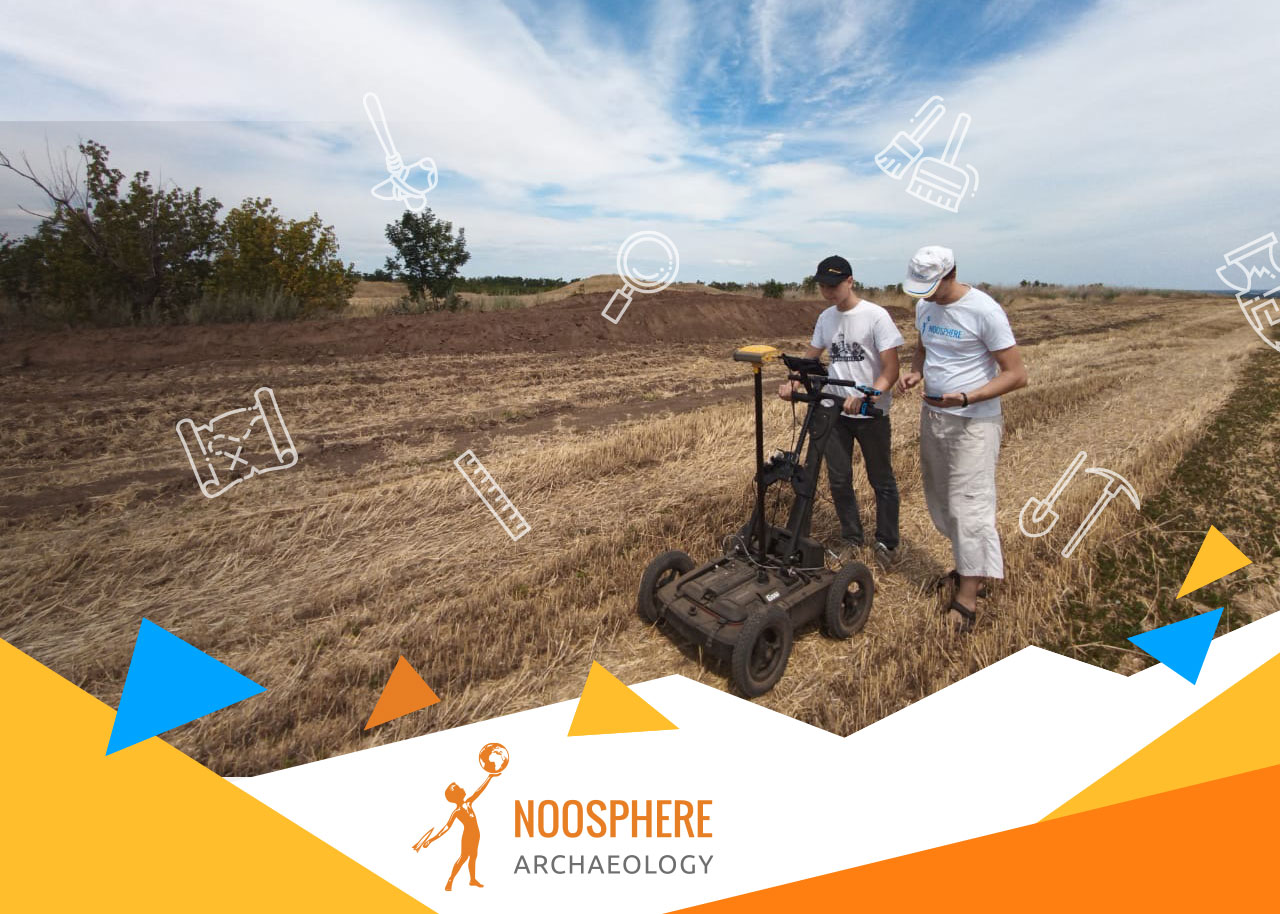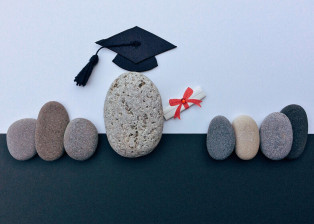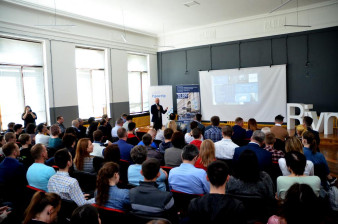The laboratory of archaeology at Noosphere Engineering School

To a first approximation, the Laboratory of Archaeology at Engineering School can give rise to certain misunderstanding – in the collective mentality, engineering and technology are absolutely far from archaeology and history. It looks like we are dealing with totally incompatible concepts.
Is that true? Let’s think about it.
ARCHAEOLOGY AND ENGINEERING
Archaeology as a discipline studies human past by the artifacts, if you will, it keeps the chronicle of mankind, confirmed by facts, and, thereby, covers absolutely every aspect of human past activities, including culture and science.
Engineering is nothing else but human conscious activity, pursuing a specific result. Most often, we associate such work with science, engineering and technology. This is where we become prisoners of artificial division of science into technical and humanitarian fields. If such division is neglected and science is regarded as a single whole based on philosophy, then the meaning of the word “engineering” becomes universal.
So, what is the relationship between archaeology and engineering? At Engineering School, we often discuss the role and place of technology in human development. We are well aware that we are the creators and builders of technological progress. If such development is considered in terms of technological determinism, then the evolution of humankind is the sequence of qualitative transformations triggered by technological progress. However, is it so clear? After all, the technological landscape is created and determined by the common sociocultural environment - nothing could be created out of nowhere. Therefore, culture and technology come into contradiction. The struggle and the unity of opposites – the law of dialectics in action.
For further discourse, let us postulate the following statement:
"homo sapiens have always wondered what, how and where the things appear from, why something happens, etc.
The subjective perception of an individual human is always in contradiction with the objective reality - the point of this contradiction is the conscious activity focused on constant search for answers to questions, developing the view of the world, even if it is relative, temporary to a certain extent, but capable of explaining the world around with a compromised accuracy. As soon as the world, being under observation, stops to be enclosed within the existing theories and concepts, we witness the scientific revolution, when the paradigms (trial theories) replace or supplement the established views and are transformed into the stage of fundamental theories, thereby ensuring continuity and heredity of scientific progress.
The activity makes its mark on history; somewhere it is huge and noticeable, and somewhere – very subtle. Therefore, the goal of the Laboratory of Archaeology is not only to search for the artefacts and marks of the past reasonable activities, but also to search for answers to the following questions:
• what was the way of our ancestors’ thinking,
• what technologies were available,
• what was their scientific and cultural horizon,
• at the end of the day, what was their view of the world.
This will enable a wider view of the history, not only and not so much from the perspective of book learning, but from the standpoint of human development and understanding of the fact that, in ancient societies with primitive forms of organization, the culture, science and technology were the drivers of development. Thereby, we could confirm the following thesis:
"human primary urge to the unknown, which could take different forms of engineering, fundamentally changed the state of affairs and had an impact on the course of history."
ARCHAEOLOGY AND SIGN CONSTRUCTIONS
We have already noted that the driving force of development is a contradiction between the subjective understanding (perception) and objective reality. As a result, we have certain creative activity focused on the search for answers to the questions about nature. Further, as result of this activity, we gain experience and knowledge. And that all is the information, which should be stored and transferred somehow. In this respect, signs and sign construction are of particular interest, namely:
• What did they designate?
• How did they designate?
• How were they transferred?
• In general, what way is the information shared within / between different generations?
• What was the primary accumulation of information?
Was there any systematization; was there something similar to prescience as some kind of knowledge system? Therefore, when we consider cave painting, petroglyphs or the previewing stage of writing, we are not just looking at the picture, but are trying to understand why and how this mark was made, what it means and what information they tried to transfer. Today, a deposit of the undiscovered signs is tremendously huge. And, once again, the understanding of what our ancestors transferred as the information and what was the purpose of such transfer will provide more understanding about the horizons of our ancestors’ thinking.
ARCHAEOLOGY AND NOOSPHERE
So, the understanding of the way that knowledge was generated in as well as the form of information exchange and what the past cultural and scientific horizon looked like will give us signals about the collective coherent activities and about the form and content of prescience.
We will be able to trace how the individual knowledge, like drops, was combined into something more – firstly into a river, and then into an ocean of knowledge, which became the heritage of all humankind, started to be beneficial and set in motion ethnicities. We will manage to understand how knowledge spread and “surrounded” more and more people, how the separate was transformed into collective single whole, how ethnic groups, lands and continents became an integral part of planetary processes… we will see and understand how Noosphere emerged and evolved.
ARCHAEOLOGY AND UKRAINE
In the modern information flow, the collective conscience loses subjectivity and becomes a subject for manipulations. In this respect, the issue of the “implantation of the historic past” becomes extremely urgent. Our country has a rich historical heritage, which define and identify us as we are. To separate us from the past, from our traditions and history, means to beggar us with no past and future. This means that our history will be written by others. Therefore, the archaeological activity is not only a scientific searching engine, but also a mechanism for the protection of our future. The clearer and deeper we understand our ancestors, the more obvious our future will be.
And this understanding should not become the matter of only specialized scientific publications. On the contrary, it is necessary to communicate this information to public and involve as many people as possible as well as awaken collective consciousness.
ARCHAEOLOGY AND YOUTH
We see a huge potential of the Laboratory of Archaeology to develop and tap the creative potential of the youth. A direct engagement with the subject of study and unveiling of the meaning are, for sure, a creative process. In its turn, the creative atmosphere and freedom of thought are fertile ground for an inception of new ideas and projects.
We should not forget that archaeologist’s work is a hard physical labor, and it is not the skills that everyone can master. By the way, archaeologist is not a profession, but a vocation. In fact, not everyone is capable of spending all days in expeditions without customary conveniences, staying alone with a shovel and a brush. We are dealing with highly involved people – passionarians who are willing to sacrifice their time for the sake of searching for answers to the questions of history, for the past and for the future. And these qualities are worth their weight in gold in the modern world.
NONINVASIVE ARCHAEOLOGY
One more aspect is an active development of the means of noninvasive archaeology (i.e., survey without excavations and demolitions). Today, the georadars, which enable to establish spatial understanding of what it is underneath the Earth’s surface, have proven to be excellent. Thereby, the efficiency of the study is being significantly raised.
Thus, the development of the automated robotic systems for noninvasive archaeology is an urgent, useful and very exciting challenge.
CONCLUSIONS
Quite an obvious picture is being established – with the help of the Laboratory of Archaeology, we would like not only to learn more about the past, but, to a greater extent:
• to become aware of the present and protect the future;
• to explore the fundamental role of science and culture;
• looking back, to understand that noosphere has coexisted with reason since ancient times;
• to find gifted creative youth and provide them with support;
• to see new horizons for ourselves.
Інші новини
Підписуйтесь для отримання останніх новин
Бажаєте реалізувати свій проєкт?
Зв'яжіться з нами і ми допоможемо втілити ваші ідеї в життя!


